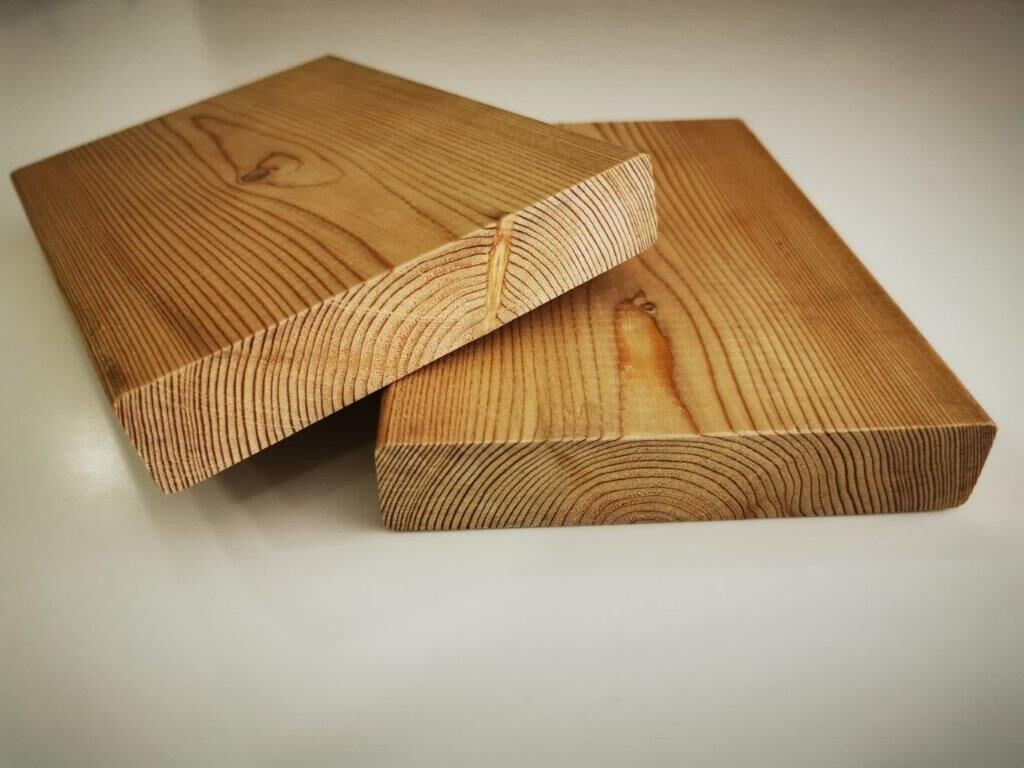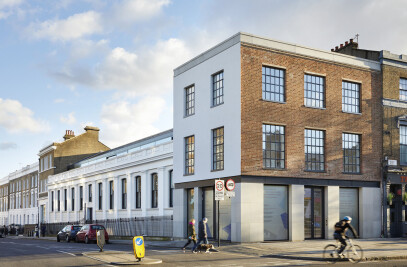Siberian Larch is a highly versatile timber product and is a preferred choice for timber cladding by architects and self-builders. With a durability class 3, it has an anticipated service life of 20 to 30 years, untreated. The high resin content found in Siberian larch makes it one of the most durable softwoods in the world. Siberian larch trees grow very slowly and consequently the larch wood is extremely dense and strong when compared to other softwoods such as spruce and cedar. Displaying a clean natural yellow/straw color, Siberian Larch will offer a sophisticated look to any project.
The Siberian larch when used for cladding and decking applications and well detailed should last more than 25 years.
A premium wood for exterior applications
Siberian Larch is a softwood timber species, the botanical name is Larix sibirica. Siberian Larch is also known as Russian Larch. The best quality and durable Siberian larch grow in the colder regions of Siberia to Mongolia, while the bulk of the larch comes from Russia hence the name Russian Larch. The native distribution for Siberian Larch L. sibirica extends across Siberia to Mongolia and northern China. In Siberia, it is extracted from ‘natural forest’ and most of this timber is extremely slow grown material. In the eastern part of its range, it hybridises with L.gmelinii and is known as Larix x czekanowskii. L.sibirica is also grown in plantations in Austria, Norway and Finland yielding more quickly grown material. It has been introduced into Canada and the northern USA.

The timber is moderately durable and used for a wide range of joinery application such as cladding, decking and garden furniture manufacture.The Siberian larch tree is a medium-sized deciduous, coniferous tree ranging in size from 20 to 40 meters tall with a diameter of 1 meter or slightly more. In favorable situations, a long, clean, cylindrical bole for two-thirds of its length can be achieved.

Siberian Larch wood facade cladding is renowned for its exceptional technical features and numerous benefits in construction and design. Originating from the vast and rugged Siberian forests, this wood possesses unique qualities that set it apart.
Strength and durability
One key technical feature of Siberian Larch is its remarkable durability. This wood boasts natural resistance to decay, insects, and fungi, making it an ideal material for outdoor use. Its robust nature ensures that buildings can withstand harsh weather conditions, providing a long-lasting and low-maintenance solution.

Siberian Larch's dimensional stability. It exhibits minimal shrinkage and swelling, even in fluctuating climates. This stability is crucial for maintaining the structural integrity of the facade over time, reducing the risk of warping or cracking. The wood's inherent strength allows for precision in machining, making it versatile for various cladding profiles and design options. It is similar to European larch in that it saws, machines and finishes well but it tends to split on nailing and therefore drilling is recommended particularly at board ends.
The density of Siberian Larch is 590 kg/m3 (mean, Kg/m³) and ranges from 570 kg/m3 to 650 kg/m3.
An attractive and changing appearance
Initially, the wood possesses a warm, golden hue that weathers to a silver-gray over time, giving structures a timeless and natural appeal. Siberian larch unpainted or stained will go silver as part of the weathering process. The weathering process of Siberian larch as any timber is a combination of various processes weathering includes weather elements rain wind, temperature, sunlight and mold on the wood surface. Siberian larch will go silver quicker when exposed to the exterior elements of rain, sunlight etc.
Siberian Larch can be stained, it is important to make sure that the Siberian Larch is well kiln dried 18% moisture content and below. This is best done in a factory controlled environment a number of the timber cladding and decking producers supply factory stained Siberian larch.
Siberian Larch can also be painted, though the moisture content should not exceed 18% prior to painting. It is best to buy Siberian larch factory-painted from the timber supplier as it is painted under factory controlled conditions.
Treatment and finishing
Siberian Larch does not require treatment against biological attack mold and fungi that is for most applications when used above ground use class 3 for decking and cladding situations. However, it is always recommended that a treatment with primer and top coat is applied to all sides of a board.
Siberian larch does not take pressure preservative treatments very well due to the tight structure and the high resin content. You will need to fire retardant treat Siberian larch if you need to improve the fire resistance or to improve the fire performance of the timber cladding, for example to Euro Class B, or Euro C EN 13501-1 or Class 1 or Class O in BS476 Part 6 and 7. Siberian larch like most timber when used for cladding applications in thickness of 18mm and above in standard cladding configurations this is generally classified as Euro Class D and is a self-declaration for CE Marking for timber cladding BS EN 14915:2006 Solid wood paneling and cladding.
Siberian larch can be cleaned by jet washing in areas with no staining or painting, stains in Siberian larch can be removed by using a wood reviver. For painted or stained or oiled Siberian larch – For factory finished Siberian larch touch up all exposed ends and splits or checks as they develop and use a soft, lint-free cloth or a large sponge and a neutral pH soap to remove any pollutants and scrap off any resin as part of the annual maintenance.
A sustainable choice
The renewability of the Siberian Larch species, combined with its long service life, contributes to the wood's eco-friendly profile, aligning with the growing demand for environmentally conscious construction materials
Project References
The client vision was to achieve an extension of the existing living space that had a strong and physical connection to the garden. By creating a formal living space to the front of the house for the evenings, and a social space for gatherings to the rear of the new extension, an enhanced and more flexible living environment was created. The architects wanted the facade to look lightweight, tactile and articulate such that it would feel like a piece of natural furniture in the garden. Siberian Larch Cladding was used, which has weathered over the course of a year to a beautiful silvery gray. The architects worked collaboratively with the client to achieve a palette of sustainable and natural materials and finishes with a muted and matt tone to achieve a sense of calm whilst allowing each material or object to be read as their own.















































